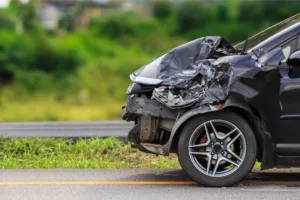What type of car insurance should I get?

Navigating the world of car insurance can be a daunting task. With so many options available, it’s easy to feel overwhelmed. Understanding the different types of car insurance is crucial. It helps you make an informed decision about the best coverage for your vehicle. In this guide, we’ll explore the various car insurance types. We’ll delve into their differences, benefits, and how to choose the right one for you.
Whether you’re a new car owner or looking to switch insurance providers, this article is for you. We aim to provide clarity on the often confusing topic of auto policies. By the end of this guide, you’ll have a better understanding of UCCU car insurance coverage types. You’ll be equipped to make the best decision for your car protection needs.
Let’s dive in and unravel the complexities of vehicle insurance.
Understanding Car Insurance Types
Car insurance is a contract between you and an insurance company. You pay a premium, and in return, the company agrees to pay for specific car-related financial losses during the term of the policy. There are several types of car insurance coverage. Each type serves a unique purpose and offers different levels of protection.
Here are the main types of car insurance:
- Liability Coverage
- Collision Coverage
- Comprehensive Coverage
- Personal Injury Protection (PIP) and Medical Payments
- Uninsured/Underinsured Motorist Coverage
Understanding these types is key to choosing the right auto coverage for your needs.
Liability Coverage: The Essential
Liability coverage is a legal requirement in most states. It covers the costs if you’re responsible for an accident. This coverage includes both bodily injury liability and property damage liability. Bodily injury liability covers the costs of injuries to others, while property damage liability covers the damage to someone else’s property. It’s important to note that liability coverage doesn’t cover your own injuries or vehicle damage. For that, you’ll need other types of coverage.
Collision Coverage: Protecting Your Vehicle
Collision coverage pays for damage to your car resulting from a collision with another vehicle or object. It also covers damage from potholes or from rolling your car. This coverage is typically required if you’re leasing or financing your car. However, it’s optional if your car is paid off. Remember, collision coverage only pays up to the actual cash value of your car, minus your deductible.
Comprehensive Coverage: Beyond Collisions
Comprehensive coverage pays for damage to your car caused by events that aren’t collisions. This includes things like theft, vandalism, fire, natural disasters, and damage from animals. Like collision coverage, comprehensive coverage is optional unless you’re leasing or financing your car. It’s worth considering if you live in an area prone to such events or if you can’t afford to replace your car if it’s stolen or severely damaged.
Personal Injury Protection (PIP) and Medical Payments
Personal Injury Protection (PIP) and Medical Payments coverage pay for your medical expenses regardless of who’s at fault in an accident. PIP also covers lost wages and other non-medical costs, which can be beneficial if you’re unable to work due to injuries from the accident. These coverages are optional in most states but are required in some. It’s worth considering if you don’t have a good health insurance plan.
Uninsured/Underinsured Motorist Coverage
Uninsured/Underinsured Motorist Coverage protects you if you’re in an accident with a driver who doesn’t have insurance or doesn’t have enough insurance to cover the damages. This coverage is required in some states and optional in others. It’s a good idea to have, as it ensures you’re not left paying out of pocket for an accident that wasn’t your fault.
Additional Coverage Options
Beyond the basic types of car insurance, there are several additional coverage options you can add to your policy. These options provide extra protection and can be beneficial depending on your specific needs and circumstances.
Here are some additional coverage options to consider:
- Gap Insurance
- Rental Reimbursement and Roadside Assistance
- Custom Parts and Equipment Coverage
Gap Insurance: For Leased or Financed Cars
Gap insurance covers the difference between what you owe on your car and its actual cash value in the event of a total loss. This coverage is especially useful if you lease or finance your car. Without gap insurance, you could end up owing more on your car loan or lease than the car is worth if it’s totaled or stolen.
Rental Reimbursement and Roadside Assistance
Rental reimbursement coverage pays for a rental car if your vehicle is in the shop due to a covered claim. This can be a lifesaver if you rely on your car for daily activities. Roadside assistance covers the cost of basic roadside services like tire changes, jump-starts, and towing. It’s a good option if you frequently travel or don’t have another form of roadside assistance.
Custom Parts and Equipment Coverage
Custom parts and equipment coverage pays for repairs or replacement of custom parts and equipment on your car. This includes things like custom wheels, stereo systems, and aftermarket parts. If you’ve invested in customizing your car, this coverage can help protect your investment. Without it, you may only receive the value of a standard model car in the event of a claim.
Choosing the Right Car Insurance for You
Choosing the right car insurance involves assessing your needs and risks, understanding policy limits and deductibles, and balancing cost and coverage. It’s not just about finding the cheapest policy, but rather finding the one that provides the best protection for your specific situation.
Assessing Your Needs and Risks
Start by assessing your needs and risks. Consider factors like the value of your car, how often you drive, where you live, and your financial situation. If you have a new, expensive car, for example, you might want more coverage than if you have an older, less valuable car.
Understanding Policy Limits and Deductibles
Next, understand policy limits and deductibles. The policy limit is the maximum amount the insurance company will pay for a covered loss. The deductible is the amount you pay out of pocket before your insurance kicks in. Higher deductibles can lower your premium, but they also mean more out-of-pocket costs if you have a claim.
Balancing Cost and Coverage
Finally, balance cost and coverage. While it’s important to find a policy that fits your budget, don’t skimp on coverage just to save a few dollars. Remember, the purpose of insurance is to protect you financially. Make sure you have enough coverage to do that, even if it costs a bit more.
Tips for Shopping for Car Insurance
When shopping for car insurance, it’s important to compare quotes from different companies. Prices can vary significantly from one insurer to another. Also, look for discounts. Many insurers offer discounts for things like safe driving, having multiple policies with the same company, or having safety features on your car.
Comparing Quotes and Discounts
Start by getting quotes from several different insurers. This will give you a range of prices to compare. Then, ask about discounts. You might be surprised at how much you can save by bundling your car insurance with your home insurance, or by having a clean driving record.
Reading the Fine Print
Finally, always read the fine print. Make sure you understand exactly what is and isn’t covered by the policy. Also, check the policy’s exclusions and limitations. These are situations or items that the policy does not cover. Understanding these details can help you avoid surprises down the road.
Making an Informed Decision
Choosing the right car insurance involves understanding the different types of coverage and assessing your own needs and risks. It’s about finding a balance between cost and coverage that works for you.
Remember, the cheapest policy isn’t always the best. It’s important to ensure you have the protection you need in case of an accident or other unforeseen event.
- Previous
- Why you should get home insurance


